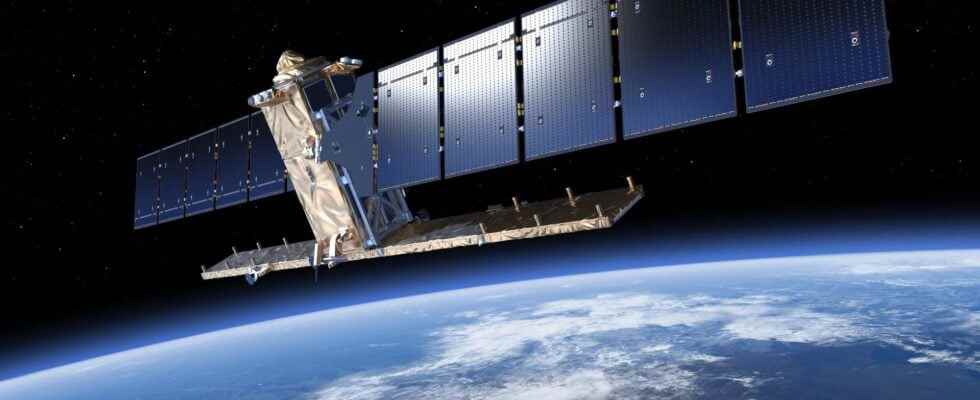Deformation of the ground before an eruption, tectonic movements… Satellite imagery now makes it possible to observe in detail the way in which the surface of our planet is continuously deformed. A new study has thus shed light on the uplift of certain Alpine massifs hitherto undetectable by other geophysical methods.
You will also be interested
[EN VIDÉO] A billion years summarized in 40 seconds: plate tectonics Researchers have modeled the movements of tectonic plates over the past billion years.
The surface of the Earth is animated by movements imperceptible but constant, from a few millimeters to a few centimeters per year. Nothing is fixed. The causes ? Volcanism, plate tectonics, erosive or gravitational processes, isostatic rebalancing, they are numerous and affect the terrestrial landscape in various ways.
Extension, compression, lifts, collapses : all these subtle movements that take place under our feet without our being aware of them can however be measured and their analysis provides scientists with valuable information, allowing them to refine their understanding of the Earth system and its environment a little more every day. dynamic. Among the many techniques used, satellite imagery by interferometry Radar has brought a small revolution in the world of geology, by providing access to the observation of deformation on a small scale and in real time in certain areas that are difficult to access.
The vertical movements of the Alps scrutinized by radar interferometry
This is the case of the Alps. This relatively young mountain range that marks much of the European landscape is the result of the collision between the continental masses of Africa and Eurasia. The convergence between these two tectonic plates is still active, especially in the eastern and central parts. In the western part, however, the convergence movement seems to have stopped, due to the anti-clockwise rotational movement of the Adriatic microplate, which indents into the continental crust European. While the rest of the range continues to register compressive deformation, the western part is characterized by extensive and transverse movements.
Vertical movements in the western Alps also seem to be more important than horizontal movements. To quantify them, a team of researchers from ISTerre in Grenoble studied the regional deformation of this part of the Alps using of a geophysical method of satellite imagery by radar interferometry (InSAR). Generally, this method is rather used to observe the evolution of landslides. This is the first time that it has been implemented for the study of large-scale deformations.
Plus 2.5 millimeters per year for Mont Blanc
The SAR satellites send a radar wave in the direction of the ground and will recover, thanks to an antenna, the signal sent back by the surface of the Earth. The results make it possible to obtain the distance between the satellite and a very precise point on the Earth, at a given moment. By passing several times over an area on different dates, it is therefore possible to observe the differences in pixel phases linked to a possible deformation of the earth’s surface. This phase difference makes it possible to obtain the amount of displacement of a pixel in the direction of the satellite and thus to quantify vertical movements of the order of a millimeter.
The data collected makes it possible to estimate the gears surfaces in the vertical field. They were acquired using the Sentinel-1 satellite, over 4 years, from November 2014 and December 2018. The results, published in Geophysical Research Letters, have made it possible to establish spatial variations of the order of a millimeter per year for the velocity field of the Western Alps, values that were invisible until now by other types of measurements.
The authors show that the maximum uplift takes place at the level of the Aar-Mont Blanc-Belledonne axis, with an uplift of 2.5 mm/year. Other areas further south also show very localized uplift, such as the Pelvoux and Argentière massifs (0.7 to 2.5 mm/year). What surprised the researchers was the fact that these areas of uplift are very localized. The isostatic rebound mechanism linked to deglaciation, often mentioned to be the cause of the uplift of the massifs, cannot therefore be the only cause here, since it acts on a much larger scale.
Uplift must therefore be associated with a mechanism to localize the deformation on a small scale. The presence of inherited structures such as faults or rheological heterogeneities (difference in the mechanical behavior of the rocks) within the crust could explain this location of the uplift. To explain the uplift in the absence of convergence movement, the researchers suggest a complex combination of several factors, such as the intensity of the erosion affecting these massifs, the glacial rebound and the retreat of the slab at depth in connection with the cessation of convergence in this area.
Interested in what you just read?
